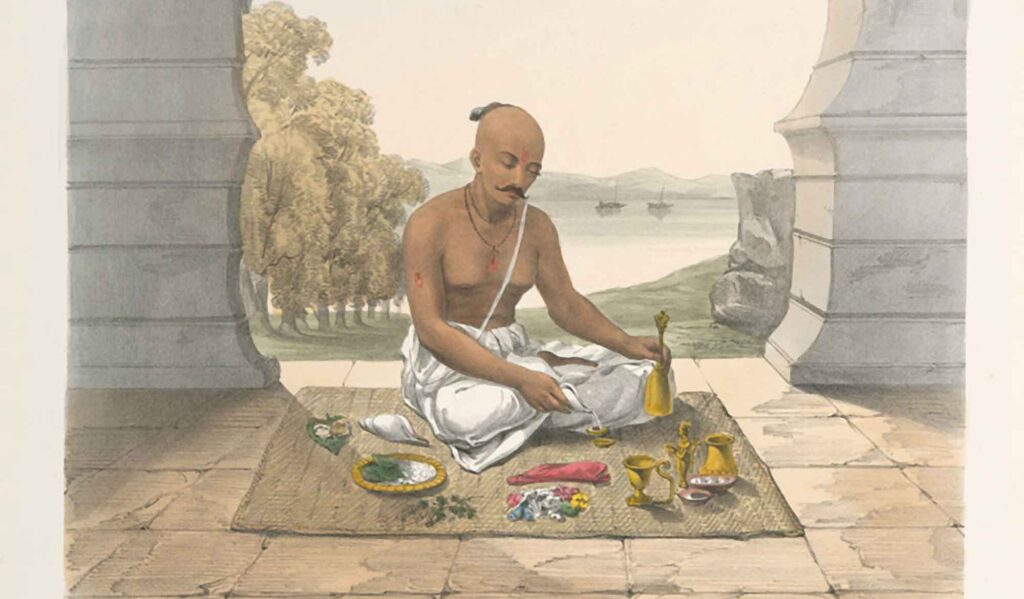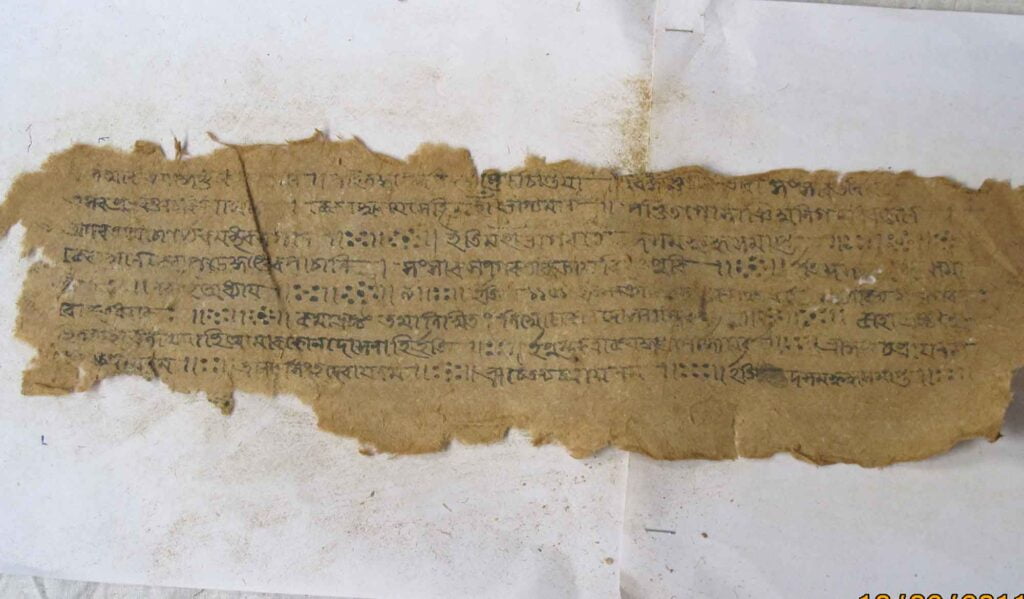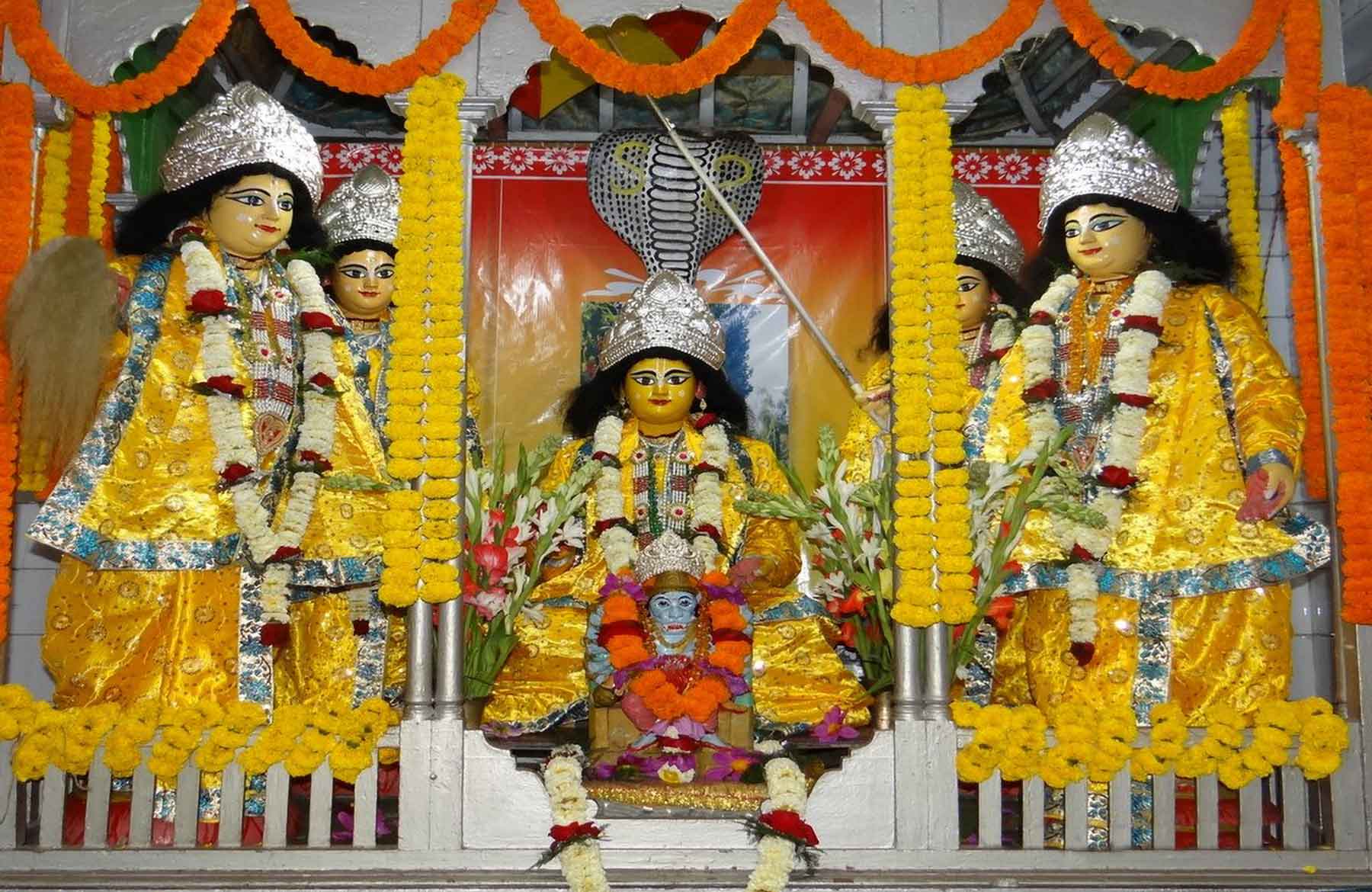Overview
In this article, Viṣaya u Vairāgya (Sense enjoyment and Renunciation), first published in the 4th Volume of Sajjana Toṣaṇī in 1892, Bhaktivinoda Ṭhākura describes the gradual development of renunciation within one who lives in this world. He gives the example of Śrīla Raghunātha Dāsa Gosvāmī, and also warns against immature renunciation.
(translated by Swami B.V. Giri)
Many think that there is no renunciation in materialistic people, and no sense enjoyment amongst the renounced. This idea is completely false. It is not impossible for a materialistic person to attain renunciation – rather they have an advantage because in that condition, many people follow the path of renunciation. When detachment arises, it is not simply a matter of abandonment. While a sādhaka remains in this gross form, he should accept whatever is necessary to maintain the body. Only men who have accepted a body can become materialists. When one attains a genuine guru, who has no desire for sense-enjoyment, then one can gradually try to make one’s heart steady and free from sense gratification. When one succeeds, then one naturally becomes a renunciant. This point can be better understood by discussing the pure character of Dāsa Gosvāmī. Once, falling at the feet of Śrīman Mahāprabhu, he announced his desire to leave his family, then the most worshippable Śrī Gauracandra gave him this instruction:
sthira hañā ghare yāo, nā hao vātula
krame krame pāya loka bhava-sindhu-kūla
markaṭa-vairāgya nā kara loka dekhāñā
yathā-yogya viṣaya bhuñja anāsakta hañā
antare niṣṭhā kara, bāhye loka-vyavahāra
acirāt kṛṣṇa tomāya karibe uddhāra
“Be patient and return home. Do not be a madman. Gradually you will be able to cross the ocean of material existence. Do not show off to the public by becoming a monkey-like renunciant. For now, enjoy things in a proper way but do not become attached to them. Develop determination internally, but externally behave like an ordinary man. Very soon Kṛṣṇa will liberate you.” (Cc. Madhya 16.235-237)
Dāsa Gosvamī, that crest-jewel amongst renunciants, accepted Mahāprabhu’s order upon his head with immense happiness and returned to his home. For some days, he behaved like a perfect householder, and after understanding the necessity of renunciation and getting the opportunity, he went to Śrī Puruṣottama-kṣetra and approached the feet of Śrī Mahāprabhu offering daṇḍavat-praṇāmas. Mahāprabhu then said:
bhāla kaila, vairāgīra dharma ācarila
vairāgī karibe sadā nāma-saṅkīrtana
māgiyā khāñā kare jīvana rakṣaṇa
vairāgī hañā yebā kare parāpekṣā
kārya-siddhi nahe, kṛṣṇa karena upekṣā
vairāgī hañā kare jihvāra lālasa
paramārtha yāya, āra haya rasera vaça
vairāgīra kṛtya—sadā nāma-saṅkīrtana
śāka-patra-phala-mūle udara-bharaṇa
jihvāra lālase yei iti-uti dhāya
śiśnodara-parāyaṇa kṛṣṇa nāhi pāya
“He has acted properly according to the rules of the renounced order. A renunciant should always perform nāma-saṅkīrtana. He should beg in order to eat, and in this way sustain his life. A renunciant should not depend upon others, and if he does so, he will not attain perfection and will be neglected by Kṛṣṇa. If a renunciant falls prey to the tongue, then his desire to achieve the goal of life disappears and he becomes a slave to taste. The duty of a renunciant is to always perform nāma-saṅkīrtana. His stomach should be sustained only by eating vegetables, leaves, fruits and roots. One who goes here and there as a slave of the tongue, devoted to the genitals and the belly, can never attain Kṛṣṇa.” (Cc. Antya.6.222-227)
Even though Śrī Dāsa Gosvāmī was a perfected associate of the Lord, in order to teach the jīvas situated in this material world how to gradually attain renunciation, Mahāprabhu instructed the Vaiṣṇavas in His sampradāya in this way.
Many think that those who worship Kṛṣṇa that are situated in varṇāśrama are not entitled to be called Vaiṣṇavas, and that those who have accepted bhek (the cloth of a renunciant) and left their families are real Vaiṣṇavas. This idea is unreasonable and against the śāstra. Almost all the associates of Mahāprabhu were householders. Due to the wickedness of Kali-yuga, it is better that Vaiṣṇavas who wish to perform kṛṣṇa-bhajana accept gṛhastha-dharma (the rules pertaining to householders) until they attain complete maturity. In order to teach this to the world, many of those who were associates of the Saviour of Kali-yuga have shown the highest type of Vaiṣṇavism which is to be practiced by householders. If Vaiṣṇavas remain at home waiting to attain maturity, the number of renunciants will be very few. In this situation, there is no need to wear the clothes of a renunciant due to fear. It is normal for the number of Vaiṣṇava sannyāsīs to be small; excess is considered to be a nuisance. Thus:
śruti-smṛti-purāṇādi-pañcarātra-vidhiṁ vinā
aikāntikī harer bhaktir utpātāyaiva kalpate
“Even unwavering devotion to Lord Hari that ignores the rules found in the śruti, smṛti, purāṇas, pañcarātra etc. is considered to be an unnecessary disturbance.” (Brahma-yāmala)
Noticing the mature Vaiṣṇava renunciant in Dāsa Gosvāmī, Mahāprabhu delivered this instruction from his holy mouth:
grāmya-kathā nā śunibe grāmya-vārtā nā kahibe
bhāla nā khāibe āra bhāla nā paribe
amānī mānada hañā kṛṣṇa-nāma sadā la’be
vraje rādhā-kṛṣṇa-sevā mānase karibe
“Do not listen to common talk and do not speak such words. Do not eat luxuriously nor dress nicely. Do not expect any honour, but offer all respect to others. Always chant kṛṣṇa-nāma, and within your mind render service to Rādhā-Krṣṇa in Vṛndāvana.” (Cc. Antya 6.236-237)
(‘Viṣaya u Vairāgya – Sense enjoyment and Renunciation’ by Śrīla Bhaktivinoda Ṭhākura was first published in the 4th Volume of Sajjana Toṣaṇī in 1892 and translated into English by Swami B.V. Giri)













